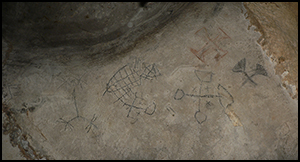Article contents
The anthropology and history of rock art in the Lower Congo inperspective
Published online by Cambridge University Press: 15 September 2016
Abstract

The rock art of the Lovo Massif region in the Lower Congo offers afascinating and understudied example of artistic traditions, some of whichpredate the period of European contact. The first extensive, systematicsurvey of the region has identified key aspects of these rock arttraditions, and has obtained radiocarbon dates that facilitate newinterpretations of the relationship between the rock art and the historicalkingdom of Kongo. Multiple perspectives are used to integrateanthropological, historical and archaeological data with stories from localmythology to show how the significance of this art has evolved over time. Asa result of this study, the unique cultural heritage of the Lovo Massif rockart has been put forward for protection under the UNESCO World Heritagelist.
Information
- Type
- Research
- Information
- Copyright
- Copyright © Antiquity Publications Ltd, 2016
References
- 7
- Cited by

